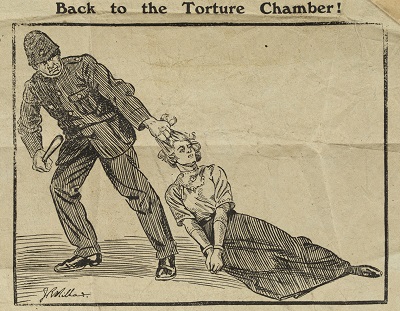Records tell story of women’s suffrage in Scotland.
A new exhibition by National Records of Scotland (NRS) brings together records of the suffragettes and the Scottish justice system for the first time.
Protests and arrests, hunger strikes and force-feeding are revealed in government, court and prison records, as well as notes from prison attendants, doctors and other officials.
The exhibition features some of the most active suffragettes in Scotland, such as Ethel Moorhead, Frances Gordon and Arabella Scott, who all underwent repeated imprisonment and force-feeding.
Documents from a private collection on display for the first time shine a light on the wider suffragist movement in Scotland, including the diaries of prominent suffragist Lady Frances Balfour, as well as a wide range of letters, newspaper cuttings, trial papers and personal correspondence.
Cabinet Secretary for Culture, Tourism and External Affairs Fiona Hyslop, said:
“Celebrating the centenary of some women securing the right to vote in the UK is an opportunity to reflect on the actions of the suffragists and the suffragettes, whose campaign for the vote marks an important milestone in women’s history. This exhibition demonstrates how much commitment these remarkable women showed to their cause.
“While we have a come a long way since 1918, much still needs to be done to achieve gender equality and create a fairer country for all. This anniversary is a great occasion to inject new momentum into supporting women’s contribution to Scottish public, political and cultural life.”
Anne Slater, acting Chief Executive, NRS, said: “This fascinating collection of documents from NRS archives offers insight into the lives and activities of prominent figures in the women’s suffrage movement in Scotland, particularly their many confrontations with the justice system.”
To complement our exhibition, we have a series of free talks covering different aspects of the women’s suffrage movement. Details of these talks and how to book can be found on our Events, Talks and Visits page.
Further exhibition information
Malicious Mischief? Women’s Suffrage in Scotland
1 August – 31 August 2018
Mondays to Fridays, 9:30 am to 4:30 pm
Free entry
General Register House, Matheson Dome
2 Princes Street
Edinburgh
Contact: Donna Green, 0131-535 1307